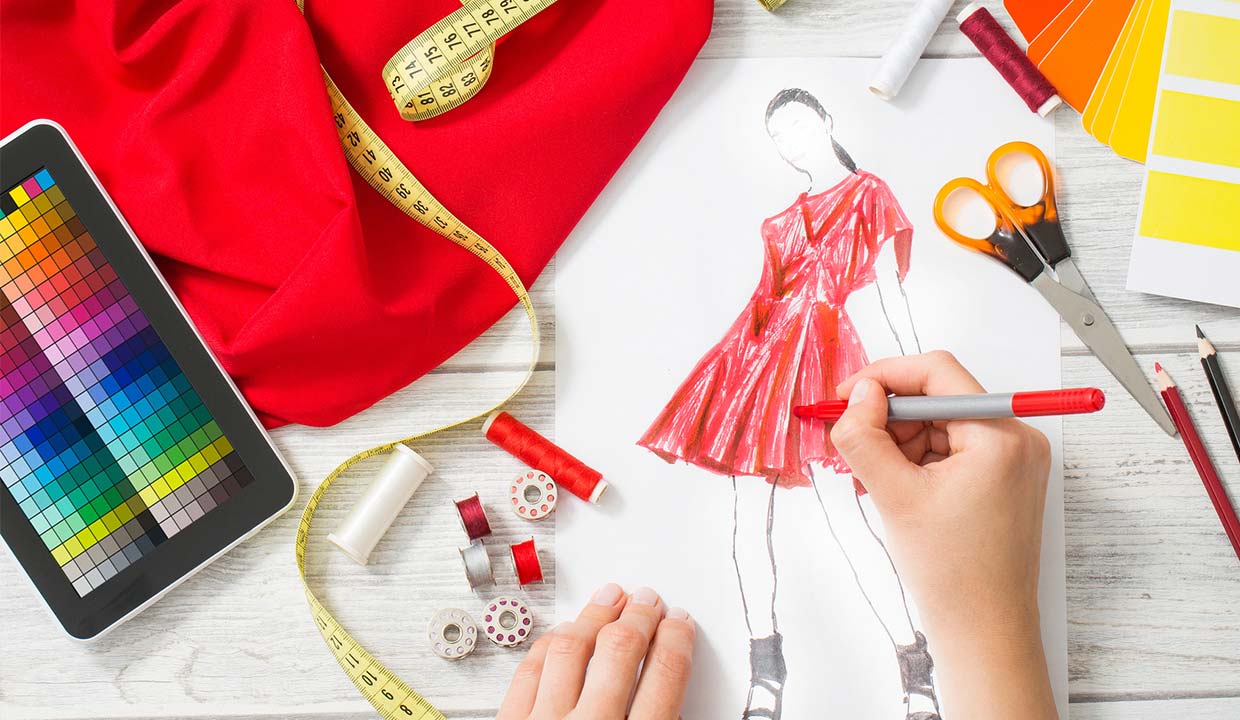
MUST-HAVES FOR A SUCCESSFUL CAREER IN FASHION
Most people think of fashion as a career that requires predicting what we will wear and how we will want to appear to others. But style is much more than designing clothes or simply looking beautiful. It is also a cultural and social phenomenon fueled by a craving for self-expression and novelty.
As one of the most sought-after careers, the fashion industry is competitive and dynamic. Hidden behind the glamour, design professionals must go through a lot of arduous work and strict deadlines. Let’s go through a few fundamental abilities required for a successful career in fashion.
ARTISTIC SENSE, CREATIVITY, AND ABILITY TO VISUALIZE
Fashion designers frequently have artistic talent. Before sewing them, they might first sketch, draw, paint, and color their initial designs. You should be aware of the connections between colors and patterns as a fashion designer and be able to pair them.
Next, innovative thinking and imagination are necessary for the creative field of fashion design. Designers must be able to invent novel shapes, patterns, and styles. Visualizing things and spatial configurations is essential for translating an idea into a wearable fashion piece. To sharpen your artistic sense and creative skills, start closely observing the design of things and products around you.
ABILITY TO THINK CRITICALLY
As a fashion designer, it’s crucial to be able to shape and picture fabrics, but you’ll also need critical thinking abilities that will set you apart. Your independent thinking is necessary since the fashion industry is constantly striving for the next big thing that will rule the globe. Use your unique ideas to produce something extraordinary that will catch the fashion industry’s attention!
You must pay attention to details if you work in the fashion sector. Stitching, color schemes, accessories, and the hair and makeup of models are just a few of the seemingly insignificant decisions that designers make but may have a significant impact on their prospects.
COMPUTER EXPERTISE
The ways of submitting drawings and designs in a physical notebook are long gone in the fashion industry. Depending on your employer, you might utilize several computer applications to create sketches. To achieve expertise as a contemporary fashion designer, you’ll need computer proficiency to stay up with the expanding fashion market. Students learn to use computer-aided art tools at several fashion design colleges to aid in the design process. Designers may have to get involved in making flyers, presentations, and marketing materials.
THOROUGH UNDERSTANDING OF FABRICS
Successful fashion designers require a solid understanding of choosing and working with various colors, fabrics, and textiles. Understanding how each material behaves and functions is essential for excellent design. It would help if you comprehended multiple textures and how they interact, the potential difficulties of working with particular materials, the durability of fabrics, and local fabric sourcing.
GOOD COMMUNICATION AND PRESENTATION SKILLS
Designers collaborate with a wide variety of people, such as tailors, clients, journalists, influencers, business owners, art directors, and style editors. Fashion designers should have excellent interpersonal skills to foster favorable interactions since they work with people frequently. They ought to cultivate several qualities to manage their professional relationships – empathy, the capacity to take critical feedback, and listening skills.
FAMILIARITY WITH CURRENT FASHION TRENDS
Along with the digitalization of fashion, the capacity to predict the most recent trends is desirable. Awareness of trends for the coming seasons can help keep your clients’ attention. You can forecast the latest trends by paying attention to fashion trends predictions and social media trends.
We’re all probably aware of the new trends like Virtual Reality and Metaverse, where unique appearances play a significant part. Studying the influences from the real world as aspects of science, engineering, digital technologies, and virtual fashion converge is essential.
ABILITY TO PERFECTLY MEASURE AND CUT
Even though many fashion designers don’t make their clothes, learning how to sew is still helpful to succeed in the industry. It’s best to have a fundamental understanding of stitching before you go, even though you’ll learn how to do this at design school. Before sewing the outfits, you will make patterns based on your designs after the drawing stage. However, trained pattern-cutters typically take over at fashion houses after the design phase.
TAKING THE FIRST STEP TOWARDS A CAREER IN FASHION
For inspired professionals, a career in the fashion sector can offer a fast-paced, exciting lifestyle. Many fashion designers pursue their love as a job, working with a diverse range of people worldwide. You may have an edge if you possess specific professional and technical abilities as you aim to become a top fashion design professional. Numerous career options are available in this dynamic sector, including merchandiser, product developer, graphic designer, stylist, quality assurance, fashion publicist, marketing manager, and many more.
Investigate multiple choices and consider what appeals to you most. If you have an entrepreneurial spirit, you could begin with courses like BBA in fashion entrepreneurship. If you are already a graduate, consider PG Diploma in Fashion Entrepreneurship. Whatever you choose, please do remember that a curious mind, attention to detail, and a successful application of creative ideas are crucial in the fashion industry.



